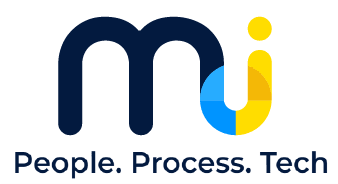In the first part of our Software Development Life Cycle Video Series, we discussed the initial ideation phase, where the idea for a new software application is born. Now, we move on to the crucial next step – the requirements-gathering phase. Gathering requirements is an essential part of the software development process as it lays the foundation for the entire project. In this article, we will explore the significance of this phase and understand the steps involved in effectively collecting and documenting requirements from customers.
Before any software development project can commence, it is vital to have a clear understanding of what the software needs to achieve. This is where requirements gathering comes into play. During this phase, the project team works closely with the stakeholders, including customers, end-users, and domain experts, to comprehend their needs, expectations, and objectives from the software.
Listing Every Single Requirement: The initial step in the requirements gathering phase is to list down every single requirement that the software should fulfill. This process involves comprehensive brainstorming and discussions with all stakeholders to ensure that no critical functionality or feature is overlooked. It is crucial not to limit ideas at this stage. Stakeholders must feel encouraged to express their visions and imaginations freely, which can lead to innovative features and a more comprehensive software solution.
Understanding User Jobs: One of the key aspects of requirements gathering is understanding the “jobs” that users will perform using the software. Different users may have distinct roles and tasks when utilizing the application. Identifying these jobs helps in defining user stories and use cases, which form the basis for capturing specific requirements.
Modularizing Requirements: As the requirements are gathered, they must be organized and categorized to make sense of the vast amount of information. Modularizing requirements involves breaking them down into smaller, manageable components or groups. This process enables a better grasp of the project’s scope and allows for a more systematic approach to software development.
Visualizing the Software: Once the requirements have been thoroughly documented and organized, the development team can move on to the next phase – creating a visual representation of the software. This typically involves designing wireframes and prototypes that illustrate the user interface, user interactions, and overall flow of the application.
Iterative Process: Requirements gathering is an iterative process. It involves constant collaboration and communication between the development team and stakeholders. As the software evolves and stakeholders gain better insights, requirements may change or new ones may emerge. Therefore, maintaining flexibility and adaptability during this phase is essential to accommodate evolving project needs.
Below are some of the benefits of Effective Requirements Gathering
Minimizing Ambiguity: Clear and well-documented requirements leave no room for ambiguity, reducing the chances of misunderstandings and misinterpretations during development.
Cost and Time Efficiency: Gathering requirements comprehensively from the start helps avoid rework and unnecessary revisions, saving time and cost in the long run.
Customer Satisfaction: By involving customers in the requirements-gathering process, they feel heard and valued, leading to increased satisfaction with the end product.
Improved Software Quality: A solid understanding of requirements enables the development team to build a software solution that precisely meets the customers’ needs, resulting in higher-quality software.
A study by the Standish Group found that 32% of software projects fail due to a lack of requirements clarity.
Another study by IBM found that 70% of software defects are caused by poor requirements.
A survey by the Software Engineering Institute found that 80% of software projects experience cost overruns, and 60% experience schedule overruns.
These statistics show that effective requirements gathering is essential for the success of any software project. By taking the time to gather and document requirements thoroughly, development teams can significantly reduce the risk of project failure.
The requirements-gathering phase is a critical step in the Software Development Life Cycle. By involving stakeholders, understanding user needs, and listing every single requirement, development teams can create a clear roadmap for the software project. Effective requirements gathering ensures that the software is built with precision, cost-effectiveness, and customer satisfaction in mind. In the next part of our series, we will dive deeper into the development phase, where the actual coding and building of the software take place. Stay tuned for more insights into the world of software development!
Are you involved in a software development project? Are you concerned about the risk of project failure? If so, then you need to make sure that you are doing everything you can to gather requirements effectively.
In this blog post, we have discussed the importance of requirements gathering and provided some imperial data to support this. We have also outlined the steps involved in effectively collecting and documenting requirements from customers.
If you are serious about ensuring the success of your software project, feel free to leave a comment below or book a time on our calendar to meet.
Please take a look at our video below and stay tuned for Part 3, where we will delve deeper into the next stage of the software development life cycle, Design.


